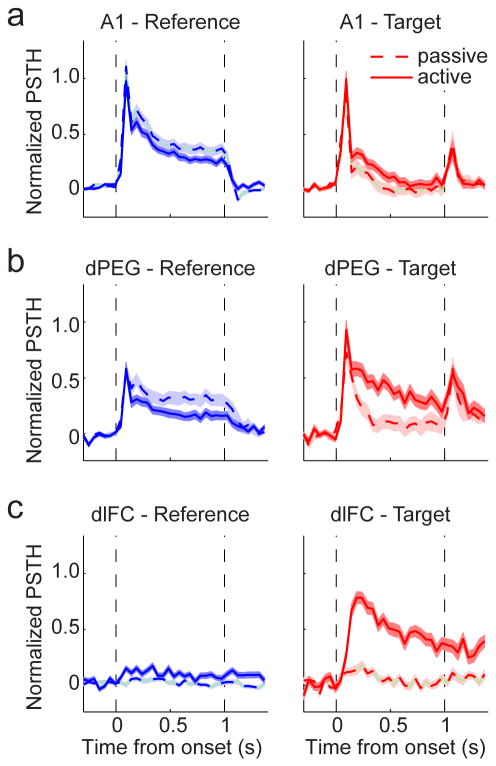Figure 4.
(a) Average behavior-dependent change in reference and target responses in A1. Left panel plots pre-passive (dashed) versus active (solid) normalized PSTH response to reference noise across all neurons that underwent a significant change in evoked response during behavior (n=155 neurons significantly modulated during behavior). The average reference response decreases slightly in these neurons. Right panel compares the average PSTH response to target tones for the same set of A1 neurons. The average target response does not change significantly during behavior. (b) Target and reference PSTH comparison for dPEG, plotted as in a (n=110). In addition to a slightly larger decrease in reference response during behavior in dPEG (right panel) than observed in A1, the average target response also increases in dPEG. (c) Target and reference PSTH comparison for dlFC (n=266). Here both the sign and magnitude of responses has been normalized so that suppression of activity by target or reference, which occurs in about 40% of cells, is plotted as a positive modulation. In dlFC, neurons show consistently very little response during passive listening and respond only to the target during behavior.

